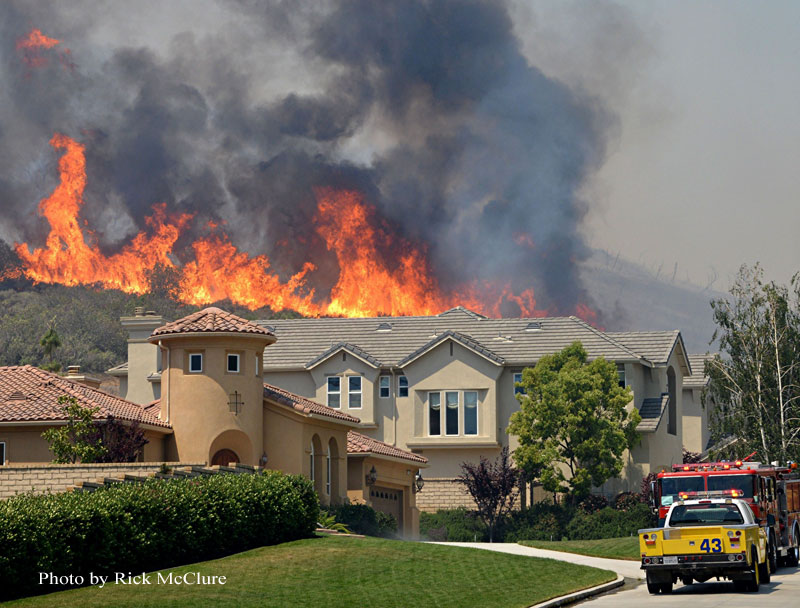
UC Berkeley wildland experiment results ‘have potential to change conversation about wildfire management’
“After a three-year, on-the-ground assessment of a 40,000-acre area of Yosemite National Park’s Illilouette Creek basin, UC Berkeley researchers have concluded that…” managing wildfires with minimal suppression and almost no preemptive, so-called prescribed burns has created a landscape more resistant to catastrophic fire, with more diverse vegetation and forest structure and increased water storage, mostly in the form of meadows in areas cleared by fires,” according to Robert Sanders, UC Berkeley’s Media Relations (Oct. 24, 2016).
The findings are the culmination of a 14-year study led by Scott Stephens, project co-author and a fire expert and UC Berkeley professor of environmental science, policy, and management, who has studied the Illilouette basin since 2002. He and his UC Berkeley colleagues sought to learn how “monitoring natural, lightning-caused fires with a bias toward letting them burn would affect the landscape, the vegetation, and the groundwater.” A severe fire had cleared this area of forest in the Illilouette Creek basin. The study is published in the current issue of the journal Ecosystems.
Gabrielle Boisramé, a graduate student in UC Berkeley’s Department of Civil and Environmental Engineering and first author of the study, notes that when fire is not suppressed, the results are “increased stream flow; downstream water availability; increased soil moisture, which improves habitat for the plants within the watershed; drought resistance of the remaining trees; and fire resilience because you have created these natural firebreaks.”
Co-author Sally Thompson, a UC Berkeley ecohydrologist and assistant professor of civil and environmental engineering, explains that the basin retained more water than similar areas outside the park even in the drought years covered by the study.
According to the team, if these results are confirmed from other studies, including the team’s new project analyzing the Sugarloaf Creek Basin in Sequoia and Kings Canyon national parks, they could alter the way the federal government as well as water districts deal with fire… “I think it has the potential to change the conversation about wildfire management,” says Stephens.
Boisramé emphasizes that this is not a strategy that would work everywhere. However, she adds, the approach could produce ecological and hydrological benefits in wilderness areas where wildfire management is being considered to reduce underbrush and eliminate fuel for out-of-control and catastrophic fires that risk lives and property. The research was supported by a grant from the federal Joint Fire Science Program.
Managed Wildfire Effects on Forest Resilience and Water in the Sierra Nevada (Ecosystems)
Fire Expert: Mega-Fires Changing Wildland Firefighting
National Geographic Examines Today’s Massive Wildfires
 MARY JANE DITTMAR is senior associate editor of Fire Engineering and conference manager of FDIC. Before joining the magazine in January 1991, she served as editor of a trade magazine in the health/nutrition market and held various positions in the educational and medical advertising fields. She has a bachelor’ degree in English/journalism and a master’ degree in communication arts.
MARY JANE DITTMAR is senior associate editor of Fire Engineering and conference manager of FDIC. Before joining the magazine in January 1991, she served as editor of a trade magazine in the health/nutrition market and held various positions in the educational and medical advertising fields. She has a bachelor’ degree in English/journalism and a master’ degree in communication arts.


